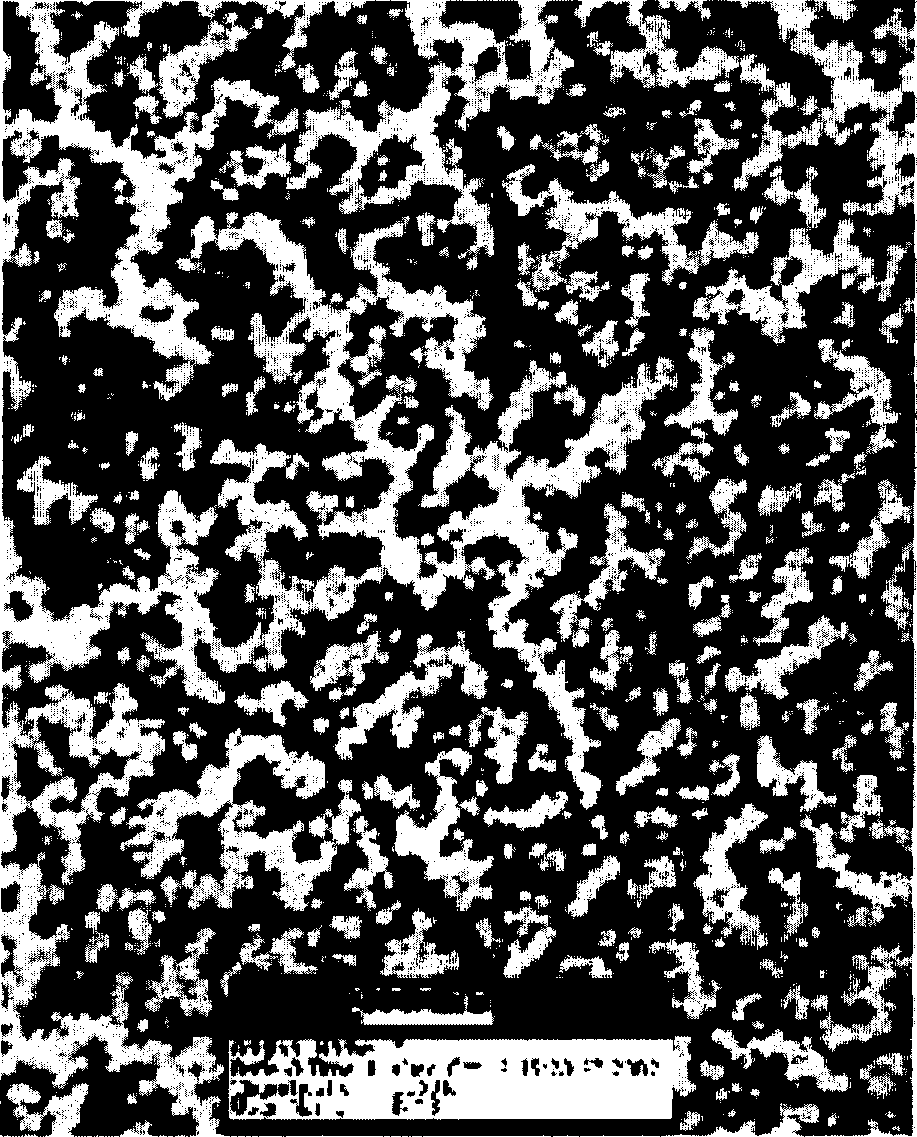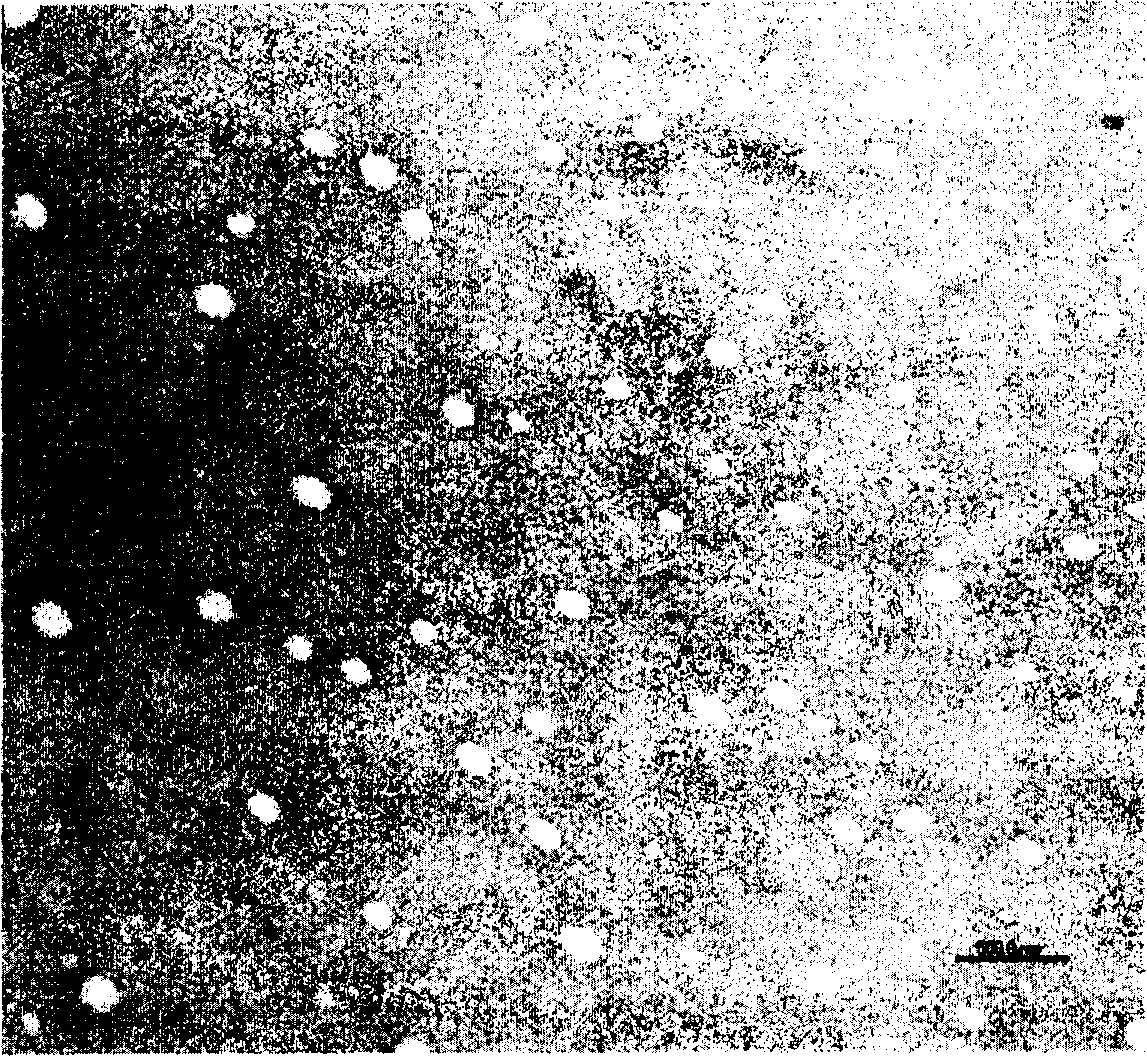Self-assembled polymeric nanoparticles containing physiologically active ingredients and external application containing the nanoparticles
A technology of physiologically active ingredients and nanoparticles, which is applied in the field of self-aggregating polymer nanoparticles, can solve the problem of not containing a large amount of active ingredients, and achieve the effect of improving absorption and improving skin
- Summary
- Abstract
- Description
- Claims
- Application Information
AI Technical Summary
Problems solved by technology
Method used
Image
Examples
preparation Embodiment 1-9
[0056] [Preparation Example 1-9] Preparation of PCL-PEG block copolymer
[0057] The preparation method of the PCL-PEG block copolymer described in this example is only for reference, and the copolymer of the present invention is not limited thereto.
[0058] The PCL-PEG block copolymer of the present invention is prepared by ring-opening polymerization of polycaprolactone monomer.
[0059] According to Table 1, a specific amount of methoxy PEG [hereinafter referred to as "mPEG" (Formula 6)] and catalyst Sn(Oct) 2 (Sigma, St.Louis, MO, USA) was added to a glass flask containing hexamethyldisilazane silanized by reaction with hydroxyl groups, and polycaprolactone monomer was added thereto and mixed uniformly . The said mPEG (Fluka Chemie GmbH, Buchs, Switzerland) is PEC, one terminal of PEC is substituted with methoxy group to prevent reaction, and the other terminal hydroxyl group can carry out polymerization reaction.
[0060] [Formula 6]
[0061]
[0062] The flask co...
preparation Embodiment 10-11
[0065] [Preparation Example 10-11] Preparation of polycaprolactone-co-polyethylene glycol block copolymer
[0066] Add 10 grams of monomethoxypolyethylene glycol (molecular weight 5000) and 10 grams of caprolactone monomer with a hydroxyl group at one end to a 50 ml dry flask, add 0.05 grams of Sn(Oct) 2 as a catalyst. A Teflon-coated magnetic rod was added to the flask, the mixture was vacuumed for 30 minutes, and the flask was then tightly sealed. The above sealed flask was placed in an oil bath at 150°C and polymerization was carried out for 6 hours.
[0067] The polymer product was in the form of a hard solid, which was completely dissolved with 20 ml of dichloromethane and precipitated with excess ether. This process was repeated 3 times to remove unreacted monomers and oligomers. The precipitated product was vacuum-dried at room temperature for 12 hours to finally obtain 17.3 g of polycaprolactone-block-polyethylene glycol block copolymer.
[0068] Depend on 1H NMR ...
preparation Embodiment 12-13
[0070] [Preparation Examples 12-13] Preparation of block copolymers of polyethylene glycol and poly D,L-lactic acid-co-glycolic acid
[0071] 5 grams of monomethoxypolyethylene glycol (molecular weight 5000) with a hydroxyl group at one end, 7 grams of D, L-lactic acid and 3 grams of glycolic acid were added to a 20 ml dry flask, and 0.025 grams of Sn(Oct) was added thereto. 2 as a catalyst. A Teflon-coated magnetic rod was added to the flask, the mixture was vacuumed for 30 minutes, and the flask was then tightly sealed. The above sealed flask was placed in an oil bath at 130°C and polymerization was carried out for 6 hours.
[0072] The polymer product was in the form of a hard solid, which was completely dissolved with 20 ml of dichloromethane and precipitated with excess ether. This process was repeated 3 times to remove unreacted monomers and oligomers. The precipitated product was vacuum-dried at room temperature for 12 hours to finally obtain 12.7 g of a block copoly...
PUM
| Property | Measurement | Unit |
|---|---|---|
| Molecular weight | aaaaa | aaaaa |
| Mw | aaaaa | aaaaa |
Abstract
Description
Claims
Application Information
 Login to View More
Login to View More - R&D
- Intellectual Property
- Life Sciences
- Materials
- Tech Scout
- Unparalleled Data Quality
- Higher Quality Content
- 60% Fewer Hallucinations
Browse by: Latest US Patents, China's latest patents, Technical Efficacy Thesaurus, Application Domain, Technology Topic, Popular Technical Reports.
© 2025 PatSnap. All rights reserved.Legal|Privacy policy|Modern Slavery Act Transparency Statement|Sitemap|About US| Contact US: help@patsnap.com



